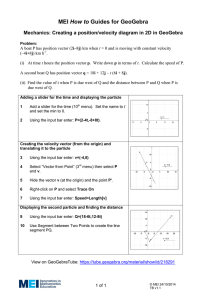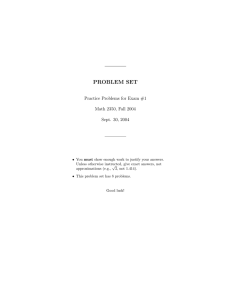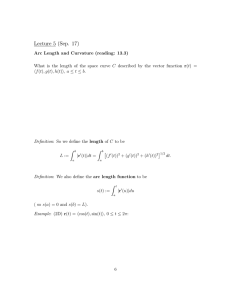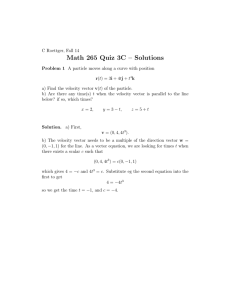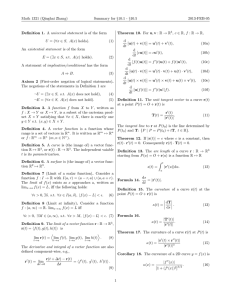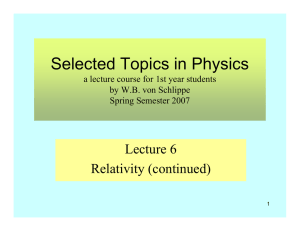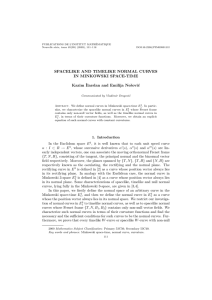M I T
advertisement
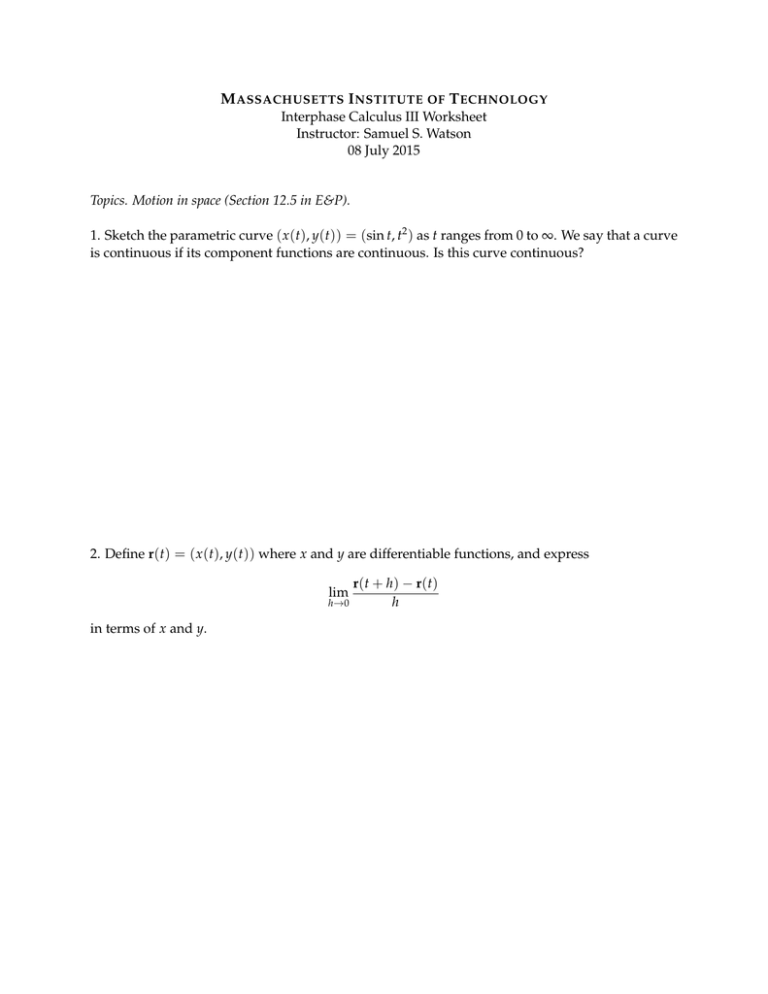
M ASSACHUSETTS I NSTITUTE OF T ECHNOLOGY Interphase Calculus III Worksheet Instructor: Samuel S. Watson 08 July 2015 Topics. Motion in space (Section 12.5 in E&P). 1. Sketch the parametric curve ( x (t), y(t)) = (sin t, t2 ) as t ranges from 0 to ∞. We say that a curve is continuous if its component functions are continuous. Is this curve continuous? 2. Define r(t) = ( x (t), y(t)) where x and y are differentiable functions, and express lim h →0 in terms of x and y. r(t + h) − r(t) h 3. Substitute t = π/2 into your answer to the previous exercise. Sketch this vector alongside your graph of the curve r(t). 4. Prove that d [u(t) · v(t)] = u0 (t) · v(t) + u(t) · v0 (t). dt 5. Find the speed at time t = 1 of a particle whose position as a function of time is given by r(t) = (2t3 , e−t , ln t). 6. Find the acceleration at time t = 1 of a particle whose position as a function of time is given by r(t) = (2t3 , e−t , ln t). 7. (Example 8 in Section 12.5 in E&P) Suppose that a moving point has initial position vector r(0) = (2, 0, 0), initial velocity vector v(0) = (1, −1, 0), and acceleration vector a(t) = (2, 6t, 0). Find the position and velocity of the point at time t. 8. (#57 in Section 12.5 in E&P) A point moves on the hyperbola x2 − y2 = 1 with position vector r(t) = (cosh ωt, sinh ωt), where ω is a constant. Prove that a(t) = cr(t) for some constant c. (Note: cosh x = (e x + e− x )/2 and sinh x = (e x − e− x )/2). 9. (#61 in Section 12.5 in E&P) Suppose that r(t) = (r cos ωt, r sin ωt), where r and ω are constants. Show that the velocity vector is tangent to the circle and that the speed is rω. Show that a is directed toward the origin and that |a(t)| = rω2 . 10. (#62 in Section 12.5 in E&P) Suppose that the only force acting on a particle is directed towards the origin. Show that the trajectory of the particle lies in a fixed plane.


